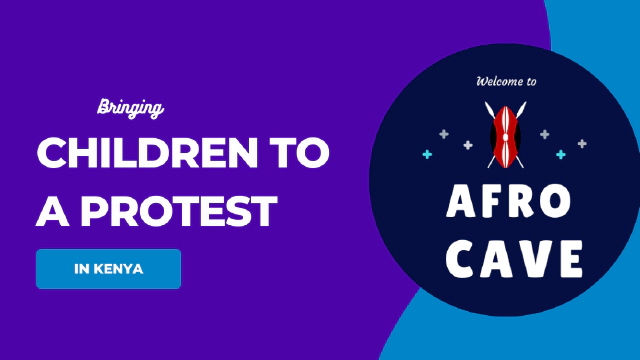There are several factors to consider before bringing children to a protest. These factors ensure the children understand the whole nine yards of a protest. They also ensure the safety of the children, moreover, helping the children and adults to understand each other and why they are protesting.
These tips apply to children under the age of ten, but they can also apply to those above the age as well. Bringing children to a protest instils in them a sense of knowledge of what is right or wrong because they are the future.
It is important to teach the kids to stand up and protest for what they believe. The freedom to protest is for everyone, from the young to the old. Laws of many countries give the right and freedom for assembly and protest.
Protesting is important for the growth of democracy. Furthermore, it is important to ensure that the protests are peaceful if the children are going to participate. Bringing children to a protest not only promotes a sense of independence but also responsibility as the children become aware of the purpose to protest.
Table of Contents Show/Hide
Before bringing children to a protest…
First, do basic research on the protest. Find out who the organisers are and seek information on whether they have any legal permit to conduct the protest. Consider police trends during the protest, the agenda of the protest, intended outcomes, required items, among others.
Second, ascertain the comfort zone of the children regarding protests. Are they apathetic or concerned about protests? Do they have any reservations about them? Much of this involves reading the mood and the thoughts of the child regarding protests.
Third, explain to the child about the protest. Clarify, among other things, its meaning, protest etiquette, protest factions and protest schedule. Protest etiquette would involve explaining to the children why protesters wear masks and carry placards, block traffic, yell, et cetera.
There is also the need to explain to the child why (as a parent, teacher, guardian, adult) you need to be there at the protest in person. All these issues will enable the child to understand both sides of the issue under protest and to think critically about social action.
Fourth, ascertain and understand the due legal process in place. Find out if there exists any legislation, court injunctions, or government investigations in place to address the issue under protest. Failure to do so will mean that you will be organising or taking part in an illegal protest.
Failure to do this means you will be teaching your children how to disrespect and disregard the laws in place. On one hand, you will be advising your children to observe the law but on the other hand, you will be teaching them how to break the law.
Fifth, before engaging children in a protest, have an idea of what to do or bring to a protest or even your appearance:
- make sure you are together at all times to avoid getting separated.
- if possible, wear matching clothing or colours that are possible to spot in case anyone wanders off.
- come with a friend or friends so you can keep an eye on each other and the children as well.
- carry supplies like snacks, water, money and even a first aid kit. These can come in handy, especially if the protest is long or there is an emergency.
- while you should only bring children to a peaceful protest, you can also carry goggles and masks and more water just in case it turns chaotic and teargas is thrown.
- lastly, as usual, don’t forget to prepare and carry your placards. After all, they send the message to others about the protest.
Sixth, if you cannot go physically to the protest, you can teach your children other ways to support the protest, such as signing petitions and making donations towards supporting the protest.
Children’s attitude to Protest
All the same, in most protests, children are unaware of the intentions of the protest. Adult give them placards, tell them to smile or to look sad or cute, to stand or sit, et cetera. Failure to educate children on protests translates to adults using them as mouthpieces or rubber stamps to back up their (adults’) points.
Therefore, before engaging the children in a protest, they need encouragement to form their own opinions about protests. It is obvious that the reasoning capacity of a child is not mature enough to conceptualise the dynamics of a protest on their own.
Note that if you go to a protest, you act as a role model for your child. The same applies if you fail to go, or if you end up scorning the protesters. Nevertheless, that does not mean that every protest is beneficial. Adults should not engage children in protest that endanger the lives of the young ones.
Democracy is a participatory system and it allows people to speak up for their rights. As such, adults should encourage children to follow suit. They should encourage their children to speak up for their rights.
Through social action, children know they can build a movement, have their voices heard, take direct action, challenge bad things, and embrace action as a part of humanity.
Nevertheless, during a protest, people should take caution not to put underage children in volatile situations or in the line of fire during protests.

